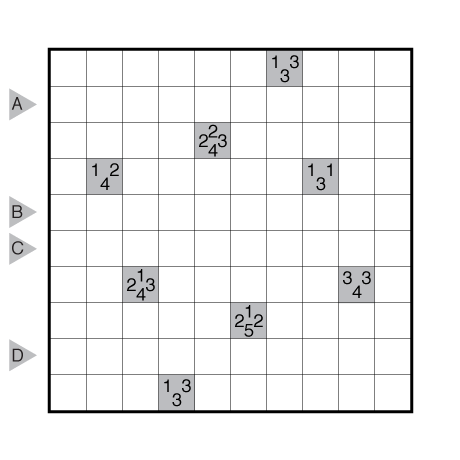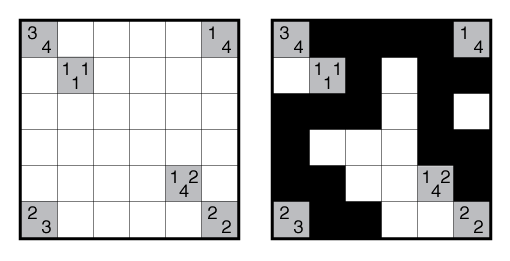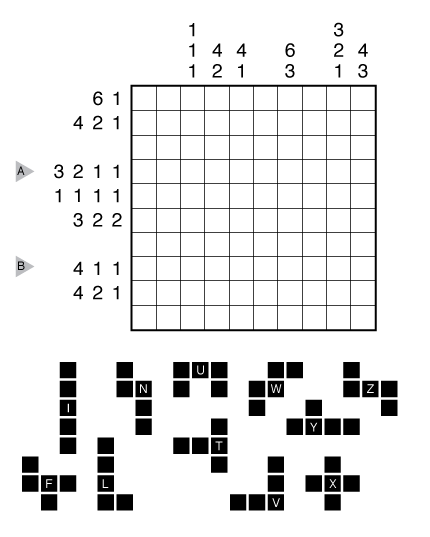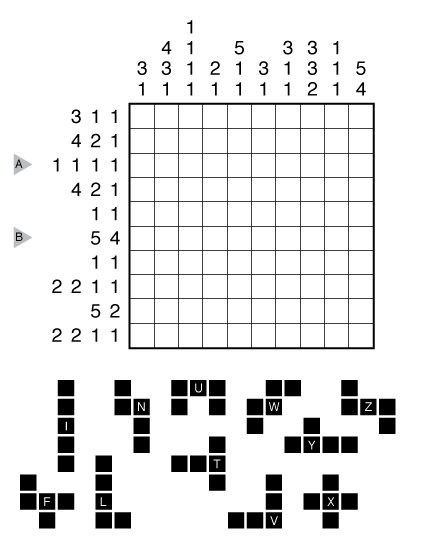Inner Coral by Palmer Mebane

or solve online (using our beta test of Penpa-Edit tools).
Theme: Clue Symmetry and Logic
Author/Opus: This is the 47th puzzle from our contributing puzzlemaster Palmer Mebane.
Rules: Shade some empty cells black to create a single connected wall (the “Coral”). The shaded cells cannot form a 2×2 square anywhere in the grid, and all unshaded cells including clue cells must be connected to an edge of the grid. Clues in the gray cells indicate the lengths of the first shaded segments visible from this cell in all four directions (clues are given in ascending order). [For clarity, when considering the “first shaded segment” in a direction, gray cells see through all empty and gray cells to the edge of the grid when finding this segment, if any.]
Also see this example:

Answer String: Enter the length in cells of each of the shaded segments from left to right for the marked rows, starting at the top. Separate each row’s entry from the next with a comma.
Time Standards (highlight to view): Grandmaster = 4:30, Master = 8:00, Expert = 16:00
Solution: PDF; a solution video is also available here.
Editorial Note: Many solvers can confuse Coral with another puzzle type with similar spelling. An easy way to remember the difference is that Cave has no R’s and also has no 2×2 Region constraint. Coral puzzles, with an R, do have this region constraint. The other general rules (about not enclosing white spaces and having a single shaded group) are shared between Cave and Coral puzzles.


